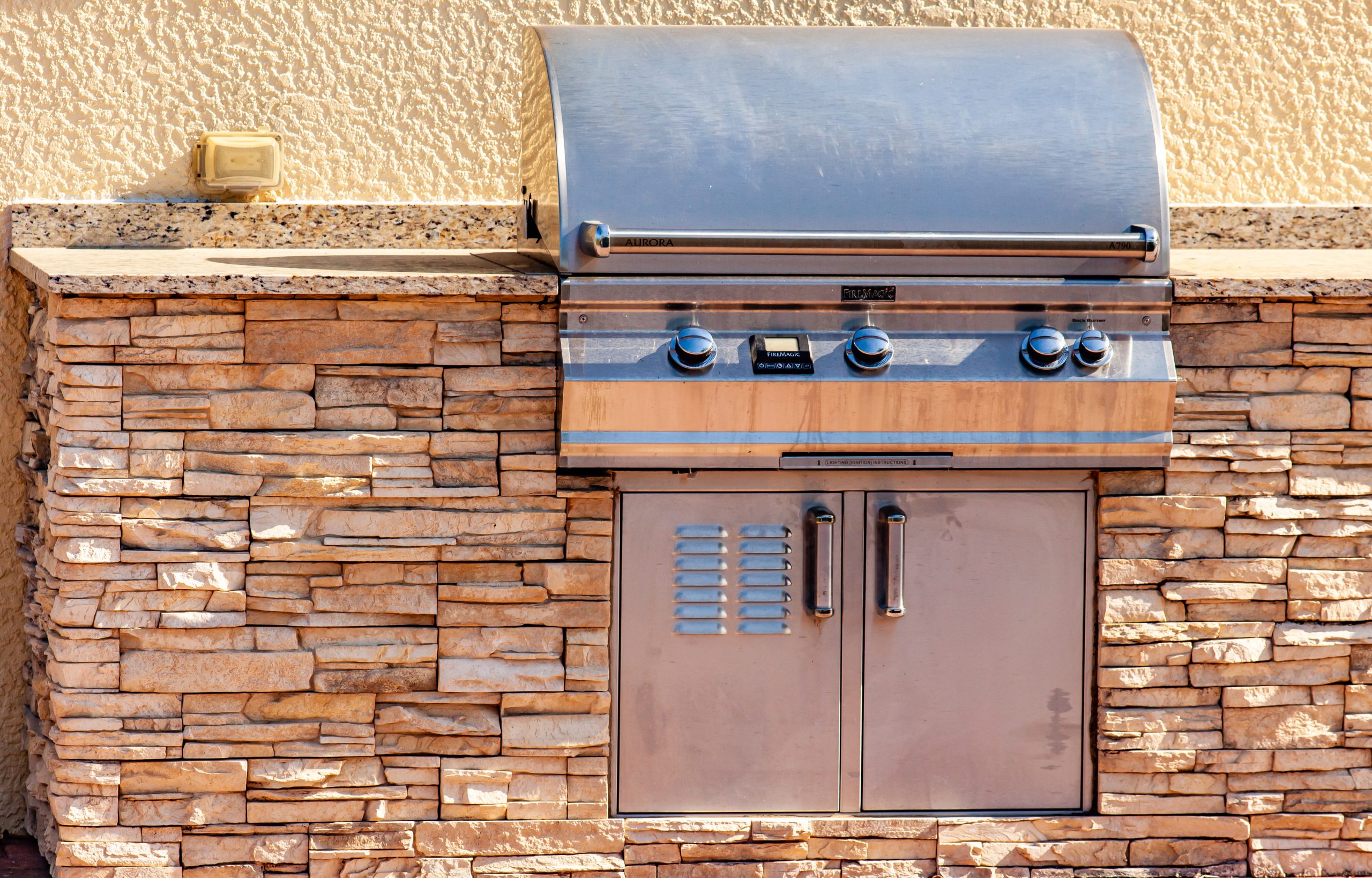 (412) 364-9114
(412) 364-9114

To create a functional outdoor kitchen space, you need materials that are strong and durable enough to take on the elements and withstand the test of time. Within this article are tips and tricks that could come in handy during your building process.
When amazing weather inspires you to entertain outdoors, food prep and dining will be easier if you have a sturdy, well-designed outdoor kitchen. You may have thought an outdoor masonry kitchen was a job strictly for a professional, but you’ll be pleasantly surprised to learn that you can DIY your own custom kitchen. All it takes is nice weather, a couple of free weekends and some good old-fashioned hard work and perseverance. Now, on to the tips!
If the bottom row of stone is even a tiny bit off, subsequent courses will also be off causing the entire structure to be off kilter. Because most patios are sloped to allow rain to run off, you’ll have to level out the first layer of stone using mortar. The easiest way to do this is to set the corner stones in mortar first; having a 6- or 8-foot level handy to make sure everything is even will help too. Once the mortar beneath the corner stones hardens, fill in the rest of the course and check to make sure it’s level as you go along.
Most likely you’ll be working with stones that are the same height and width, but maybe different lengths. By alternating stone lengths, you can create a wall with an attractive visual texture. The trick to piecing together a pleasing pattern is dry stacking each course or row to determine where each stone is going to go. Then, it’s just a matter of lifting the stones one by one, applying adhesive, and setting the stones back into place.
When working with stones, you don’t need to use mortar anywhere other than beneath the first couple stones–this is for leveling purposes only. However, you still need to lock the stones together tightly, as you don’t want your stones moving or shifting if bumped. The solution? Use a top-quality masonry adhesive. Placing a dollop about the size of a half-dollar on each stone before placing the next will ensure the wall will be structurally sound as a whole.
A sleek, durable concrete countertop is the mark of a completed outdoor kitchen. What concrete mix you pick though, determines if your countertop will be show stopping or not. For best results, we recommend using a concrete formulated to resist cracking. The super-plasticizer additives within the formula work to form a dense concrete slab, with a fine surface texture. If extra support is needed, placing wire mesh or rebar into the countertop halfway through the pour is recommended.
Creating a flawless countertop requires careful planning. With that being said, concrete is extremely heavy–a 2-inch-thick countertop that measures 2 feet by 3 feet, weighs around 150 pounds. Because of this, it’s a good idea to pour your countertop in sections rather than one large slab. For full instructions, check out this concrete countertop video.
After the wet concrete is smoothed out, either tap the sides of the form with a mallet or run a hand sander around the edges. The vibration from these actions encourages the wet concrete to settle into any remaining air bubbles or voids, ensuring the smoothest finish possible. Once this is done, leave the countertop sections undisturbed for 18 to 24 hours before stripping the forms.
Every kitchen needs a sink, so why not call Terry’s Plumbing to install one in your outdoor kitchen? Call us today for more information and to schedule an appointment!